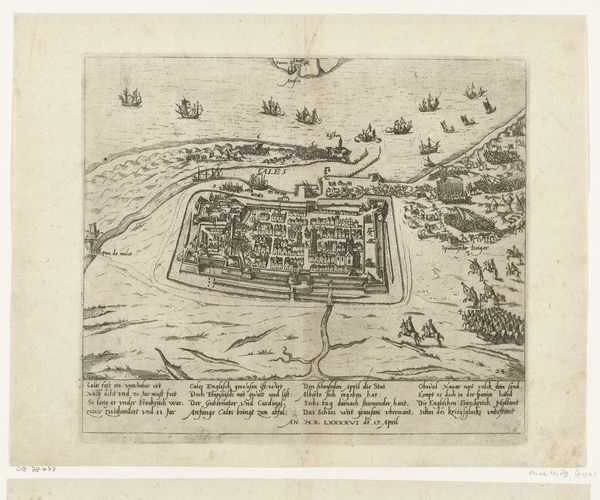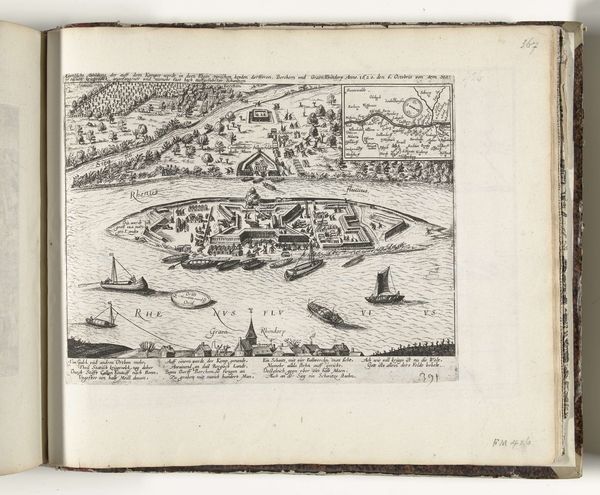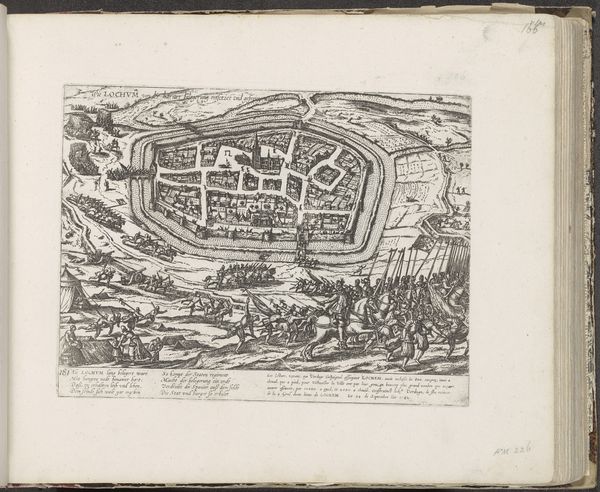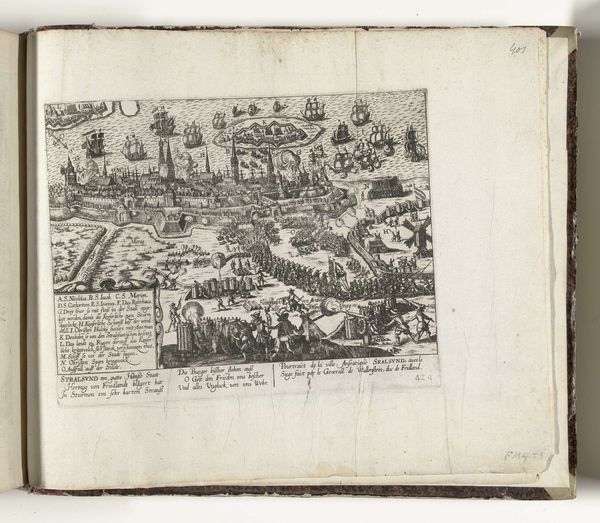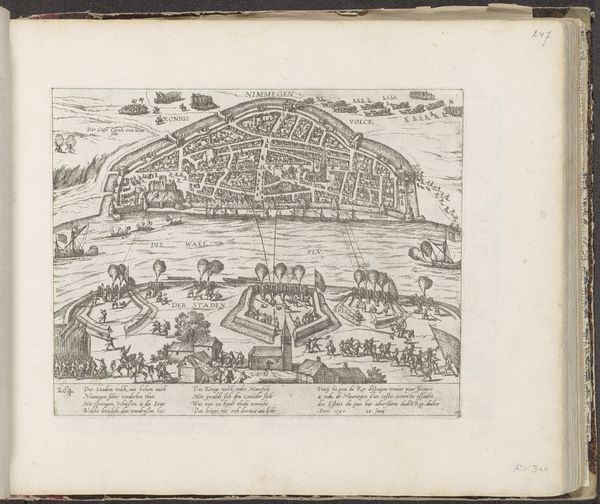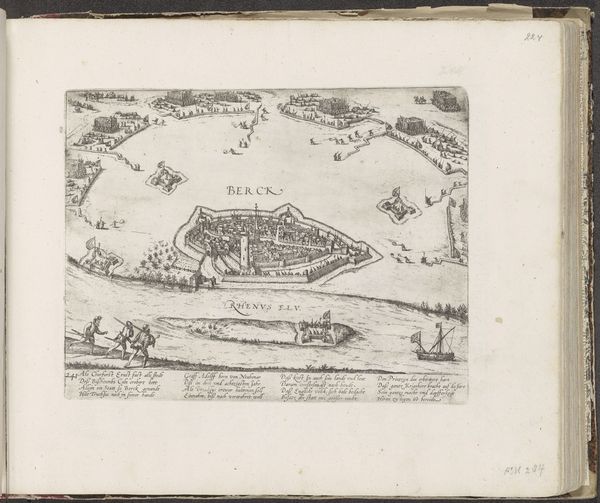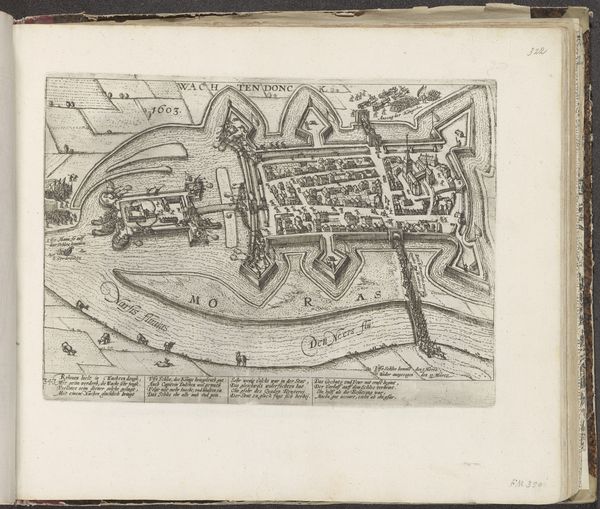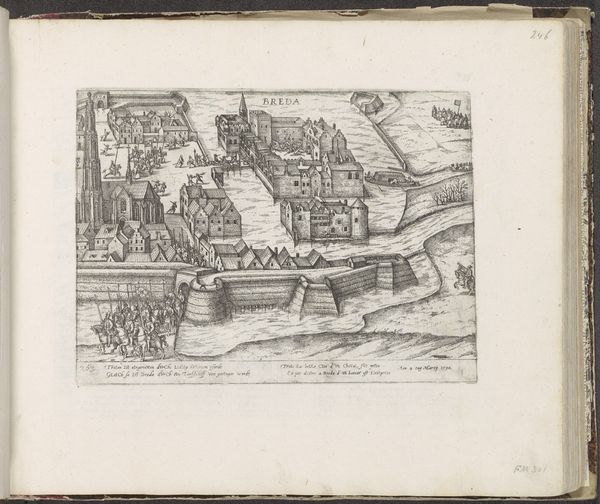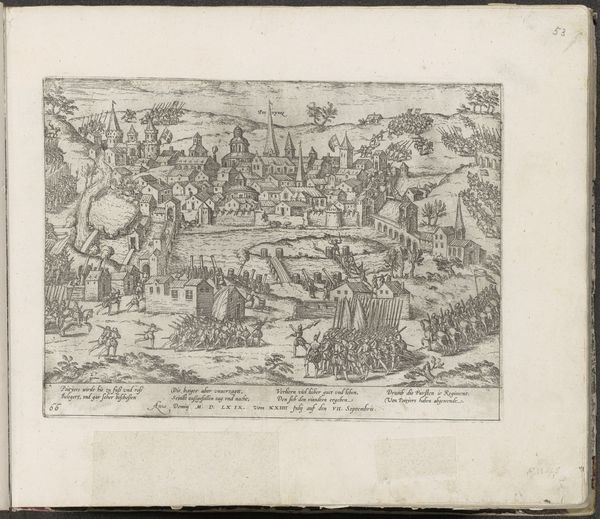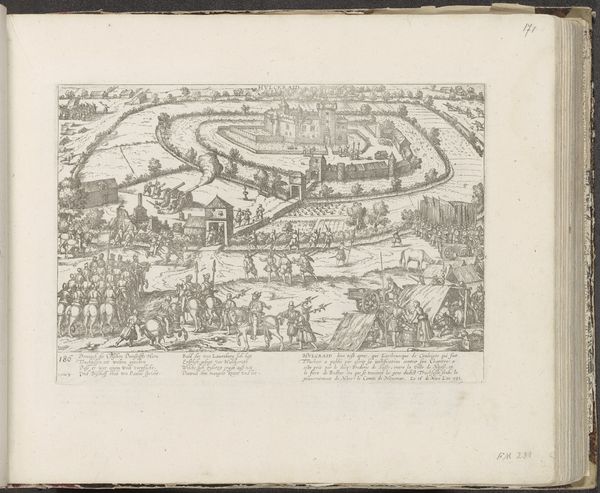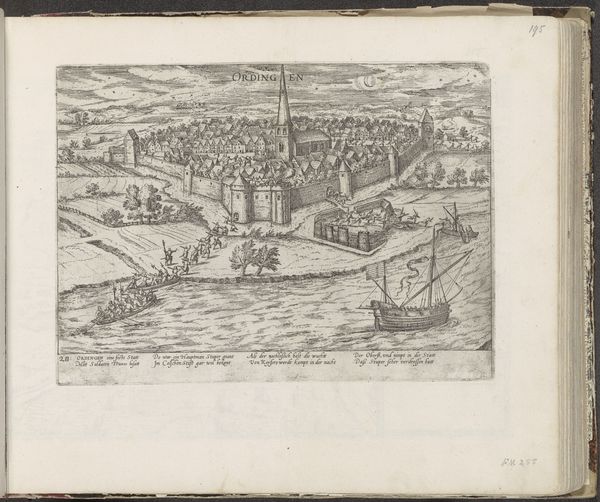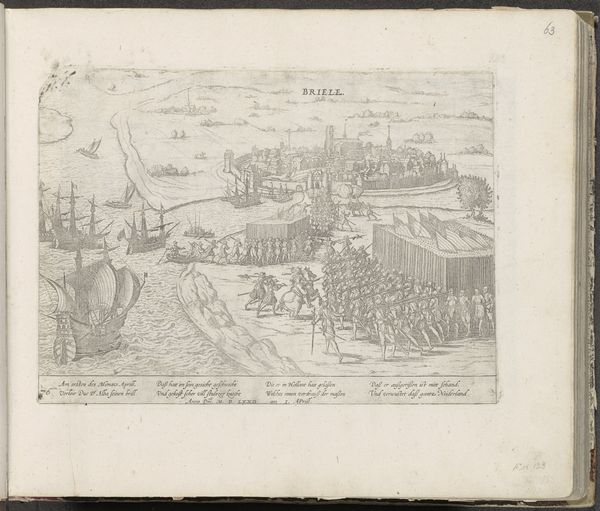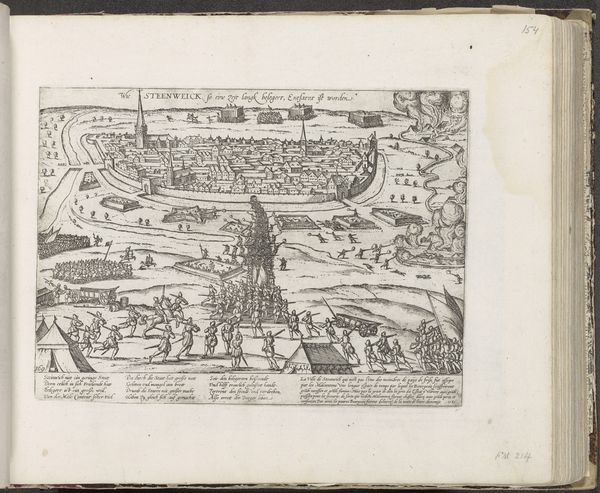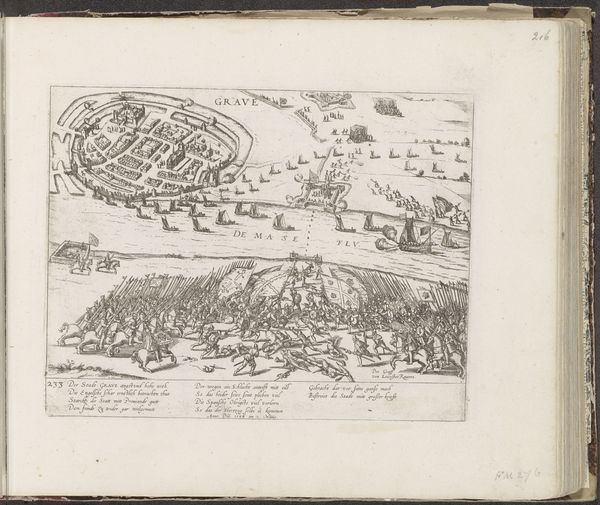
drawing, print, ink, engraving
#
drawing
#
aged paper
#
toned paper
#
baroque
# print
#
pen sketch
#
sketch book
#
personal sketchbook
#
ink
#
pen-ink sketch
#
ink colored
#
pen work
#
sketchbook drawing
#
cityscape
#
history-painting
#
sketchbook art
#
engraving
Dimensions: height 207 mm, width 271 mm
Copyright: Rijks Museum: Open Domain
This print, "Inname van Calais door Albrecht," was made in 1596 by Frans Hogenberg, using an engraving technique. Engraving involves cutting lines into a metal plate, inking the surface, and then wiping it clean so that ink remains only in the incised lines. This plate is then pressed onto paper to create a print. Here, the artist meticulously rendered the siege of Calais with an impressive level of detail; notice the fortifications, ships, and troop formations. The engraving process itself is labor-intensive, demanding skilled craftsmanship. Each line represents a deliberate mark, requiring both physical and mental precision. Hogenberg, as a printmaker, was part of a larger network of artisans and publishers, producing images that circulated widely and shaped public opinion. These prints played a crucial role in disseminating news and propaganda, reflecting the political and social context of the time. By appreciating the materials, the labor-intensive process, and the historical context, we can fully understand the significance of Hogenberg's work, and the importance of printmaking in early modern Europe.
Comments
No comments
Be the first to comment and join the conversation on the ultimate creative platform.
